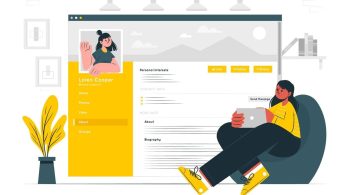In today’s digital era, Learning Management Systems (LMS) have become indispensable tools for educational institutions, corporations, and online learning platforms. LMS platforms streamline course management, enhance learner engagement, and facilitate effective learning experiences. In this article, we will provide a comprehensive guide on how to use an LMS effectively to maximize its potential and achieve optimal learning outcomes.
Getting Started with an LMS:
A. Familiarize Yourself with the Interface:
When you first access an LMS, take the time to navigate through the platform and explore its different sections and features. Get acquainted with the layout and menu options, ensuring you understand how to navigate the LMS efficiently. Additionally, familiarize yourself with the user roles and permissions assigned to different users, such as administrators, instructors, and learners, as this will determine your access and capabilities within the LMS.
B. Course Setup and Organization:
To effectively use an LMS, it is crucial to create a well-structured and organized course. Start by defining the course structure, including modules, lessons, and assessments. Divide the course content into logical sections, making it easier for learners to navigate and access the material. Ensure that the course layout is intuitive, providing clear instructions and a logical flow of information. Utilize multimedia elements such as videos, images, and interactive elements to enhance engagement and learning.
II. Engaging Learners:
A. Course Materials and Resources:
An LMS provides a centralized platform for storing and delivering course materials. Use this opportunity to upload relevant documents, presentations, videos, and other resources that support the learning objectives. Ensure that the content is easily accessible and organized within the LMS, making it simple for learners to locate and utilize the materials. Regularly update and supplement the resources to keep the content fresh and up to date.
B. Communication and Collaboration:
LMS platforms offer various communication tools to foster interaction and collaboration among learners and instructors. Utilize discussion forums, chat features, and messaging systems to encourage participation and facilitate meaningful discussions. Engage with learners by providing timely feedback, answering questions, and promoting peer-to-peer collaboration. These communication features create a sense of community and enable learners to support and learn from one another.
C.Assessments and Feedback:
LMS platforms provide robust assessment capabilities. Leverage these tools to create quizzes, tests, assignments, and other forms of assessment to evaluate learner progress and understanding. Design assessments that align with the learning objectives and provide clear instructions and grading criteria. Leverage the automated grading features of the LMS to streamline the evaluation process. Additionally, provide prompt and constructive feedback to learners to help them improve and reinforce their learning.
III. Monitoring and Analytics:
A. Tracking Learner Progress:
An LMS offers tracking and analytics features that enable you to monitor learner progress. Utilize these tools to gain insights into learner engagement, completion rates, and assessment performance. Monitor learners’ activities within the LMS to identify areas where they may require additional support or intervention. Use the data provided by the LMS to inform your instructional decisions and customize the learning experience to better meet learners’ needs.
B. Data Analysis and Reporting:
LMS platforms generate data and reports that provide valuable information for administrators and instructors. Analyze the data to classify strengths, trends, and areas for development. Use this information to refine and enhance the course content and instructional strategies. Share reports and progress updates with stakeholders to showcase the effectiveness of the learning programs and make informed decisions regarding resource allocation and future improvements.
Conclusion:
Learning Management Systems are powerful tools that can revolutionize the way we deliver and manage educational content. By following this comprehensive guide, you can harness the full potential of an LMS and create engaging learning experiences for your learners. Utilize the features and functionalities of the LMS to effectively organize courses, engage learners through communication and collaboration, and leverage assessments and analytics to track progress and enhance learning outcomes. Embrace the power of an LMS to create impactful and transformative learning experiences.
If you want to get your hands on a Learning Software, please click on this link.






